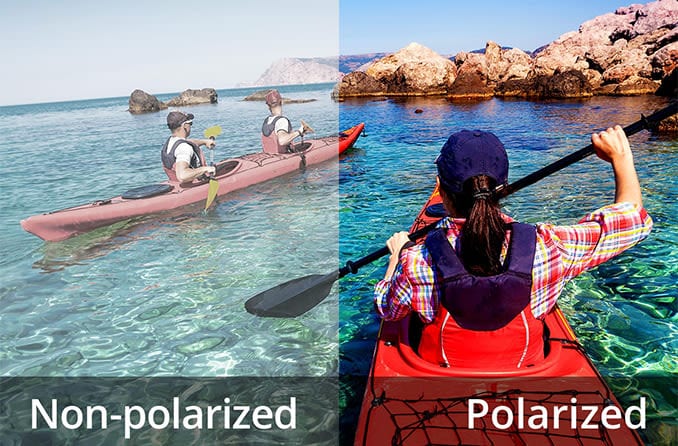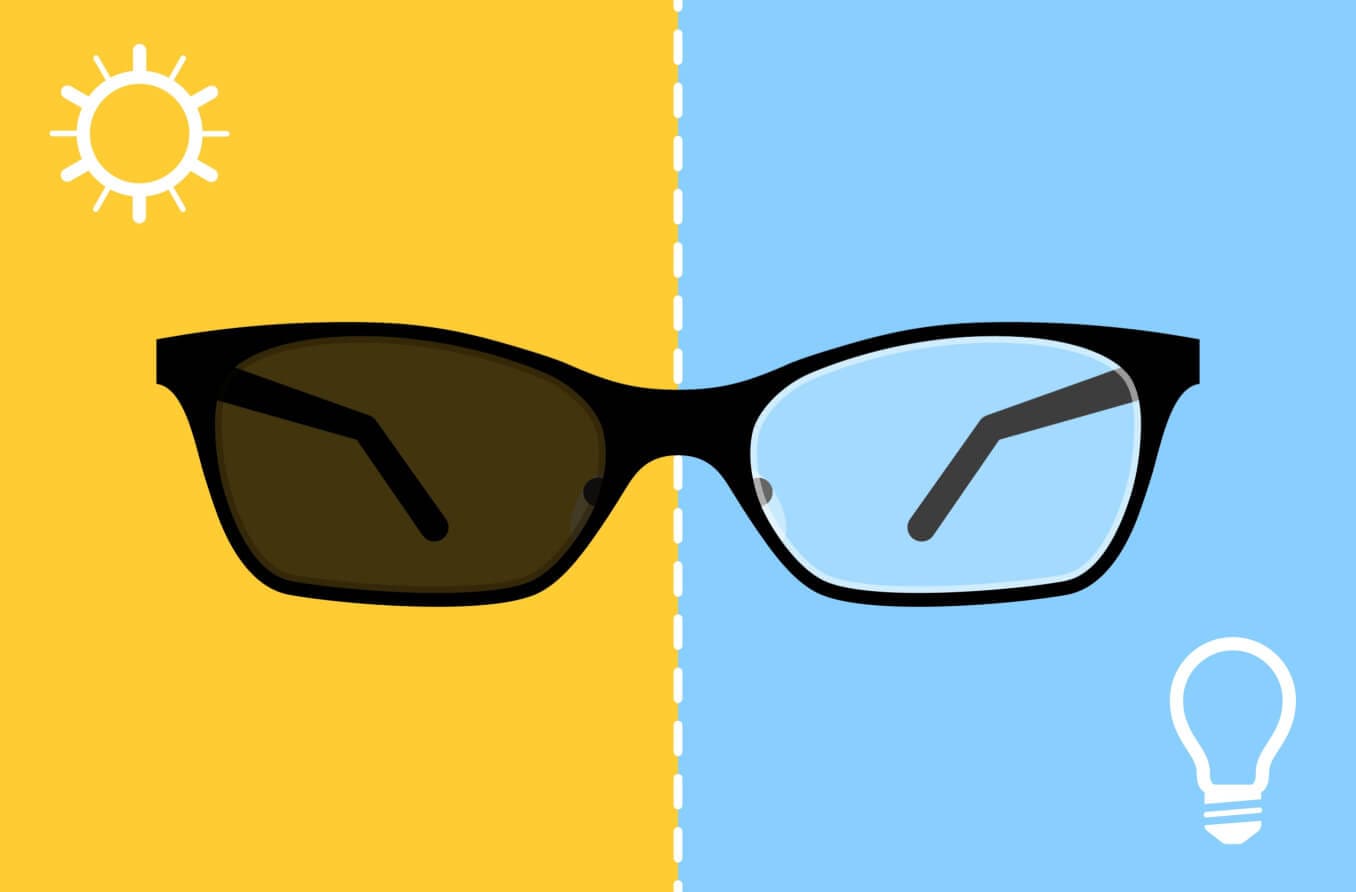What’s the difference between polarized and non-polarized sunglasses?
Polarized and non-polarized sunglasses both darken a bright day, but that’s where their similarities end. Polarized lenses can reduce glare, lessen reflections and make daytime driving safer; they also have a few drawbacks.
Picking out sunglasses is hard enough before having to worry about whether to go polarized or not. We’ll lay out some key differences between these two types of sunny-weather shades so you can decide what’s best for you.
Outdoors
Many people notice the biggest difference between the polarized and non-polarized sunglasses when they are outdoors.
The special coating on polarized lenses is highly anti-reflective, working around the clock to reduce reflections, haze and glare.
At the right angle, looking at a lake or ocean through polarized sunglasses will allow you to see past most surface reflections and through to the water below. Polarized lenses make some of the best sunglasses for fishing and boating activities.
Their anti-glare properties are also great for scenic viewing and nature hikes all around; the coating increases contrast during the day and often makes the sky appear a deeper blue.
Polarized lenses’ anti-glare and increased contrast traits also can help people who suffer from light sensitivity, although the benefit can vary depending on the strength or darkness of the lens.
Driving
Polarized sunglasses can be a lifesaver during sunny daytime driving, especially when sunlight hits at just the right angle to interfere with your vision. Polarized lenses filter the sunlight that reflects off roads, snow and windshields, neutralizing most or all of it. The result is a safer driving experience, free from the distraction and discomfort of glare.
It’s more of a toss-up during brighter overcast weather, since glare is less of an issue. Some people might feel like non-polarized sunglasses cooperate better with the lower contrast of total cloud cover.
It should be noted that driving with polarized sunglasses in certain snowy or icy conditions can be less safe than using a non-polarized alternative. Any patches of iced snow or black ice, which are already barely visible, may become even harder to see without surface reflections.
The same applies to skiing and other winter sports where it’s important to see slick patches in time to avoid them.
Screen usage
Digital screens, like the ones on your smartphone, laptop and TV can sometimes look different when viewed through polarized lenses.
For example, screens viewed through polarized lenses can appear slightly faded or, in some cases, completely dark, depending on the angle from which you’re viewing the screen. While this usually only happens when the screens are rotated at an unusual angle, it’s worth noting that non-polarized sunglasses don’t cause this visual distortion.
With that in mind, if you’re experiencing symptoms of digital eye strain, talk to your eye care professional before getting polarized lenses. Instead of sunglasses, your eye doctor may suggest that you wear computer glasses to help you focus more easily on the screen and filter blue light.
READ MORE: Polarized sunglasses and LCD screens
Polarization, prescription and price
Both polarized and non-polarized sunglasses are available with prescription and non-prescription lenses.
Polarized prescription lenses usually involve an additional charge on top of the included, basic lens option, but this isn’t always the case. Some manufacturers include polarization as a standard feature or offer it free of charge. Make sure to read the fine print to find out if there will be an additional cost.
If you don’t need prescription lenses, polarized sunglasses can cost the same, or as little as a few dollars more, than their non-polarized counterparts.
READ MORE: What are the advantages of polarized sunglasses?
Are polarized sunglasses better than non-polarized shades?
Whether you choose to go the polarized sunglasses or non-polarized sunglasses route comes down to your preferences — and how you plan to use your shades. Many people gravitate toward the perks of polarized sunglasses, while others prefer non-polarized shades for a view that’s closer to that of the naked eye.
Of course, there’s nothing wrong with having one of each kind of sunglasses.
POLARIZED OR NON-POLARIZED? Shop for sunglasses at an optical shop near you or through an online eyewear retailer.










